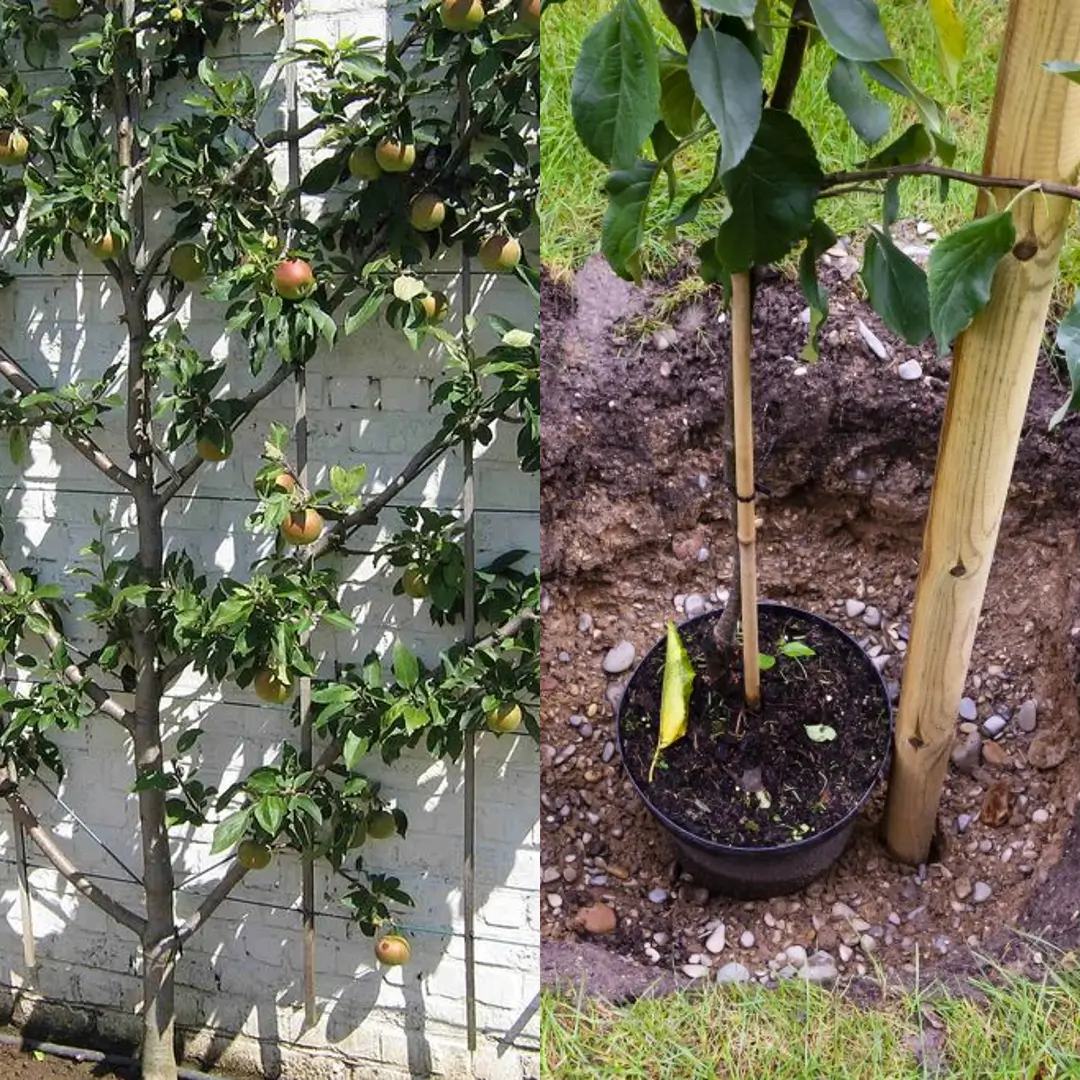There’s something truly special about growing your own fruit trees. Not only do they provide delicious and fresh produce right from your backyard, but they also enhance the beauty of your outdoor space and can even boost property value. If you’ve ever wondered how to plant fruit trees and enjoy an abundance of home-grown fruit, you’re in the right place! This guide will walk you through every step, from choosing the right tree to planting and caring for it. Let’s dig in!
When to Plant Fruit Trees
Timing is everything when it comes to planting fruit trees. The best time to plant fruit trees depends on where you live, whether it’s the Northern or Southern U.S.
Northern U.S.: Early Spring Planting
For those in the northern parts of the U.S., early spring is your golden window to plant fruit trees. The key here is to wait until the frost has left the ground but act quickly before the soil dries out too much. When the soil has thawed, it’s time to get planting! Bare-root trees are particularly suited for this time because they establish well when planted in mid to late spring.
Pro tip: To check if your soil is ready for planting, dig in with a shovel. If the soil clumps together and sticks to the shovel, give it a little more time to drain before starting.
Southern U.S.: Early Winter Planting
In the southern regions of the U.S., early winter is the optimal time to plant fruit trees. This is because planting during dormancy allows the roots to establish themselves before the growing season begins. The trees won’t experience the stress of hot summer temperatures, making early winter the perfect time for southern gardeners to plant fruit trees.
Remember, the rule of thumb for both regions is to plant your tree while it’s still in its dormant state. This sets it up for success as the roots grow deep and strong without the burden of producing leaves and fruit right away.
Choosing the Right Fruit Tree
Choosing the right tree is one of the most exciting parts of the process! You’ll need to decide whether to go for a bare-root tree or a container-grown tree, both of which have their pros and cons.
Bare-Root Trees
Bare-root trees are exactly what they sound like—trees that are sold with their roots exposed, often in a protective bag. They’re typically available for purchase in late winter, just in time for early spring planting. What makes bare-root trees great is that they tend to be more economical and come in a wide variety of fruit types. You’ll have access to more unique and specialized varieties that you might not find in container-grown trees.
However, one thing to keep in mind is that bare-root trees need to be planted before they break dormancy. Timing is everything!
Container-Grown Trees
If bare-root trees seem a little too complicated, container-grown trees might be more up your alley. These trees come in pots and are typically available later in the spring. They’re more convenient since they’re already growing, but they also come with a few challenges. For one, they tend to be more expensive, and they might be rootbound by the time you purchase them. This means their roots may have tangled up in the pot, which can hinder their growth once planted. Additionally, the variety selection for container-grown trees is often more limited.
That being said, container-grown trees are a solid choice for fall planting, as they’ve already established a root system.
Preparing the Site for Planting
Now that you’ve chosen your fruit tree, it’s time to prepare the perfect spot for it to grow. Just like with any garden, the success of your fruit tree largely depends on the quality of the site you prepare.
Full Sunlight
Fruit trees need at least 8 hours of direct sunlight each day to produce fruit. Without enough light, the tree’s growth will slow, and you’ll likely get fewer fruits or none at all. Make sure the location you choose gets ample sun, especially during the growing season.
Well-Drained Soil
Good drainage is key. Fruit trees do not like “wet feet,” meaning their roots can rot if they’re left in waterlogged soil. Aim for well-drained soil, and if your soil has a lot of clay or sand, consider improving it by working in some well-rotted manure or compost before planting.
Soil pH Between 6.0 and 7.5
Fruit trees thrive in soil with a pH of 6.0 to 7.5. You can easily test your soil’s pH with a home testing kit, and if your pH is outside this range, you can adjust it by adding the appropriate amendments like lime for acidic soil or sulfur for alkaline soil.
Protect from Strong Winds
If you live in an area that experiences strong winds, try to plant your tree in a sheltered spot. Winds can damage the branches and reduce the amount of fruit your tree produces.
How to Plant a Fruit Tree
Once you’ve selected and prepared your site, it’s time for the fun part—planting your fruit tree! Here’s a step-by-step guide to make sure your tree gets off to a great start.
Digging the Hole
When digging the hole for your fruit tree, bigger is better! Dig a hole that is about 2 to 3 times as wide as the root system of your tree. This gives the roots plenty of space to grow. However, don’t make the hole too deep—just 2 to 3 inches deeper than the root ball is perfect.
Pro tip: If your soil is heavy with clay or is very sandy, expand the hole and mix in compost or rotted manure. This improves soil structure and gives your tree a better chance to establish.
Plant at the Correct Depth
The depth at which you plant your fruit tree is crucial for its long-term health. For grafted trees, you’ll notice a bump where the rootstock was joined to the fruiting part of the tree. This graft union should sit slightly above the soil line when the tree is planted. If you bury it too deep, the fruiting part may develop its own roots, leading to a weaker tree in the long run.
Filling the Hole
As you fill the hole, gently tamp the soil down with your foot to remove any air pockets. Be careful not to compact the soil too much, as the roots still need room to breathe. Create a slight depression around the tree’s base to help water collect naturally.
Post-Planting Care
Planting a fruit tree is just the first step—now it’s time to take care of your tree to help it thrive.
Supporting the Tree
Newly planted fruit trees are a bit wobbly until they’ve fully established their roots. This is where staking comes in. Insert a sturdy stake next to the tree, about 1-2 feet away, and tie the trunk to the stake using soft materials like rubber or nylon stockings. This support should stay in place for 2 to 4 years until the tree is strong enough to stand on its own.
Watering
Right after planting, give your tree a good drink of water—2 to 5 gallons should do the trick. Watering helps settle the soil around the roots and eliminates any remaining air pockets. Continue to water regularly during the first few weeks, especially if rainfall is scarce.
Mulching
Mulching helps retain moisture and keeps weeds at bay. Spread a layer of well-rotted manure or compost around the base of the tree, but make sure to keep it 3 inches away from the trunk to prevent rot. The mulch should fan out about 3 feet from the tree’s base to provide optimal moisture retention and weed control.
Protecting from Animals
If you have deer, rabbits, or other hungry critters in your area, you’ll need to protect your young tree. Use fencing or chicken wire to keep them at bay. For rabbits, a smaller fence around the base will do, but for deer, you’ll need a taller fence spaced farther from the tree to prevent them from reaching the branches.
Pruning Your Fruit Tree
Pruning is essential for shaping your tree and encouraging healthy growth. Shortly after planting, prune the tree to a height of 30-36 inches. Remove any branches from the bottom 18 inches of the trunk to focus growth on the top portion. This will encourage side-branching and help establish a central leader that will grow into the main trunk of your tree.
Espalier for Small Spaces
If space is a concern, you can use a technique called espalier, where you train the tree to grow flat against a wall or fence. This is a great way to grow fruit trees in small yards or urban environments.
Planting fruit trees might seem like a big task, but it’s incredibly rewarding. By following this guide, you’ll give your fruit trees the best possible start, ensuring they grow strong and healthy, producing delicious fruit for years to come. Whether you’re in the North or South, planting bare-root or container-grown, the steps are simple, and the results are absolutely worth it.
So, what are you waiting for? Get out there, plant your fruit trees, and enjoy the fruits of your labor—literally!
FAQs
Q1: Which is the best method of fruit planting?
The best method of fruit planting depends on your goals and resources, but generally, bare-root planting is considered ideal for many gardeners. It’s cost-effective, offers a wider variety of tree options, and the trees establish strong root systems when planted during dormancy. If you’re looking for convenience and flexibility in planting time, container-grown trees are also a good option, especially for fall planting.
Q2: What is the best month to plant fruit trees?
The best month to plant fruit trees varies based on where you live. In the Northern U.S., early spring is ideal—typically March or April—right after the frost leaves the ground. In the Southern U.S., early winter (December or January) is perfect, allowing the trees to establish their roots during dormancy.
Q3: Can you plant different fruit trees next to each other?
Yes, you can plant different fruit trees next to each other! In fact, some fruit trees, like apple or pear, even benefit from cross-pollination when planted near other varieties. However, ensure there’s enough space between the trees to allow for proper air circulation and growth. Spacing typically ranges from 15 to 30 feet, depending on the tree’s mature size.
Q4: What is the easiest fruit tree to grow?
The easiest fruit tree to grow for most gardeners is the apple tree. Apple trees are hardy, adaptable to a variety of climates, and generally require less maintenance than other fruit trees. Other easy options include plum, pear, and fig trees, which are also resilient and beginner-friendly.


